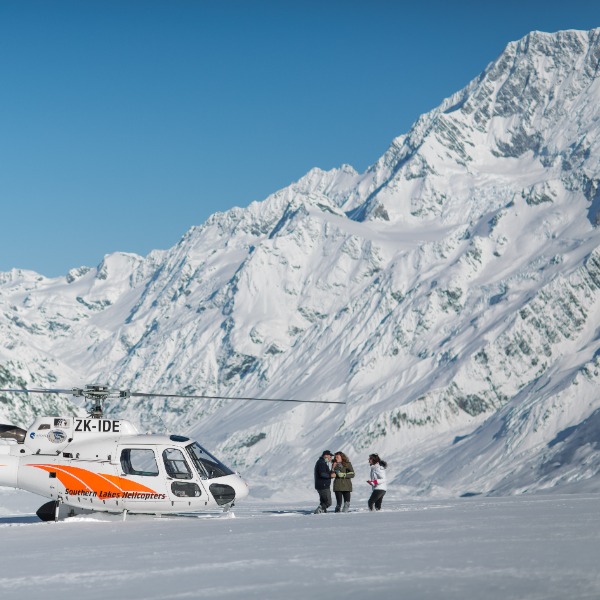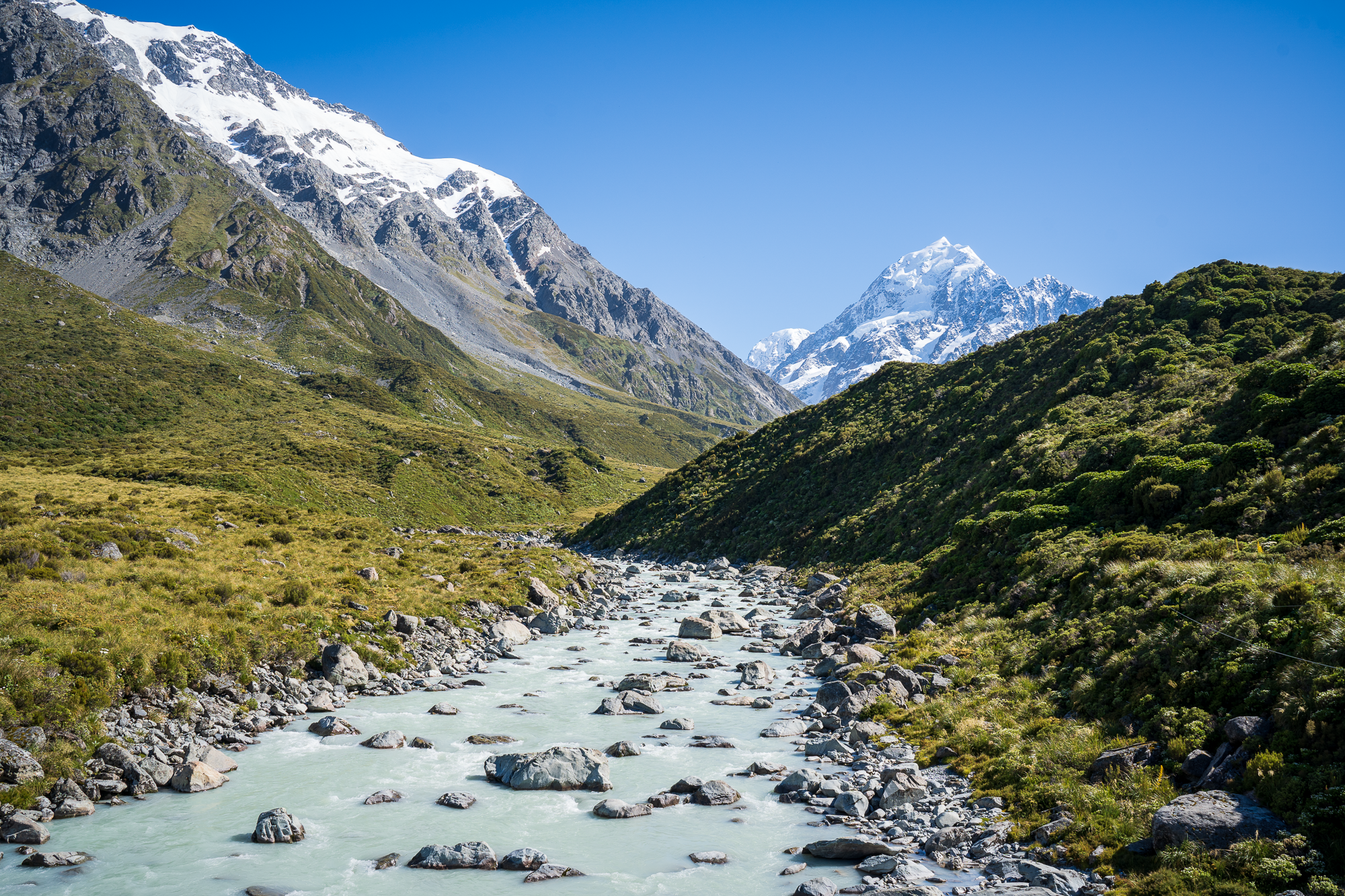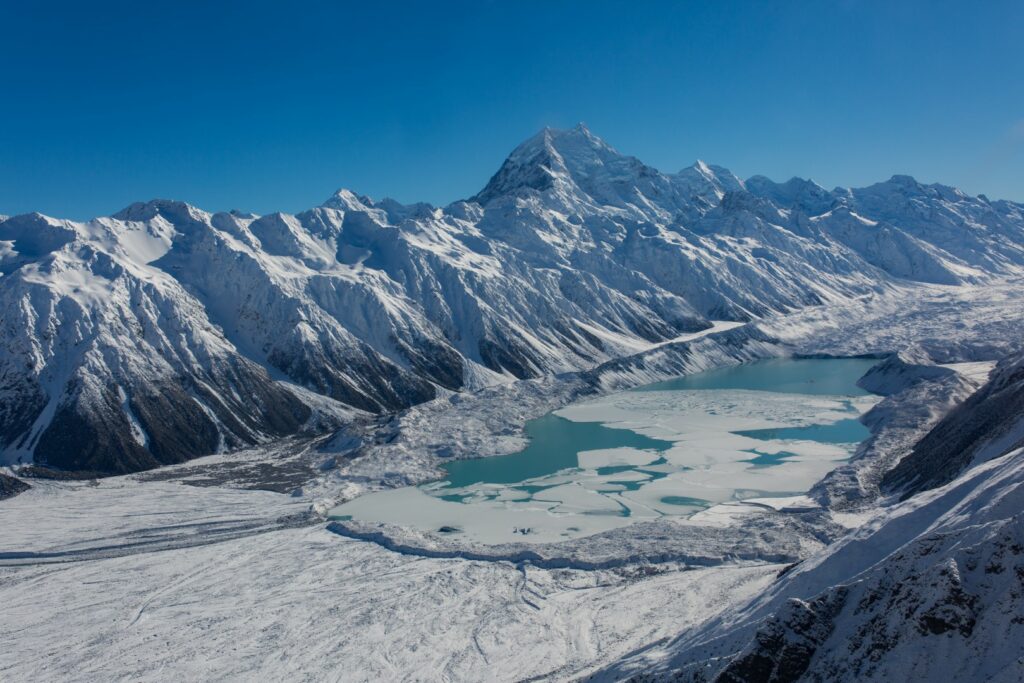Explore Mt Cook and Glaciers
July 24, 2023
Aoraki/Mt Cook and the Hauapa/Tasman Glacier
Mount Cook, known as Aoraki in Te reo Māori, stands as the tallest mountain in New Zealand’s Southern Alps. This iconic peak, reaching a height of 3,724 meters, carries a rich history and captivating geography. Aoraki, meaning “cloud piercer,” has been a sacred site for Māori people for centuries, while also attracting explorers and climbers from around the globe. Its breath-taking glaciers and turquoise lakes make Mount Cook National Park a haven for outdoor enthusiasts and a testament to New Zealand’s natural beauty.
The Haupapa/Tasman glaciers stretches over 27 kilometres in length, it is the longest glacier in New Zealand and a captivating attraction for visitors. The Tasman glacier flanks the eastern side of Mt Cook and Mt Tasman, meandering through the rugged terrain, creating a mesmerising landscape of ice formations, crevasses, and frozen lakes. At the terminus of the glacier is Tasman Lake. This glacier-fed lake is formed by meltwater from the Tasman, Rudolf, Forrest Ross, Kaufmann, Haast, Hochstetter and Ball glaciers.
Tasman Glacier Fun Facts:
• New Zealand’s longest glacier: Approx 27km long (But receding fast)
• Area: 101 km²
• Thickness: 600m at some points
• Some crevasses are big enough for buildings to fit inside them
• The glacier starts 3,000 metres above sea level
Mt Cook and the Māori Legend
The name, Aoraki (Mt Cook), comes from an ancient Māori legend about Aoraki and his three brothers. They were the sons of Rakinui (the Sky Father). The legend goes that the brothers embarked on a journey around Papatuanuku (the Earth Mother) and when their waka (canoe) collided with a reef they became stranded.
The brother sought safety and climbed onto the upturned waka and waited to be rescued. While they waited, the chilling southerly wind froze their bodies into stone and their hair turned white.
Legend has it that the waka transformed into the South Island of New Zealand. The tallest maunga (mountain) was named after the tallest brother, known as “Aoraki”. The remaining brothers and the waka’s crew became the other maunga (mountains) of the Southern Alps.
Follow in the footsteps of legends…
Intrepid travellers have had Mount Cook in their sights as far back as the late 19th century when European explorers and mountaineers began to venture into the region.
Mt Cook was where the legendary mountaineer Sir Edmund Hillary developed his climbing skills whilst preparing for the conquest of Everest. The first successful ascent of Mt Cook is recorded on Christmas Day 1894 by Jack Clarke, Tom Fyfe and George Graham. Check out the newspaper clipping from that day.
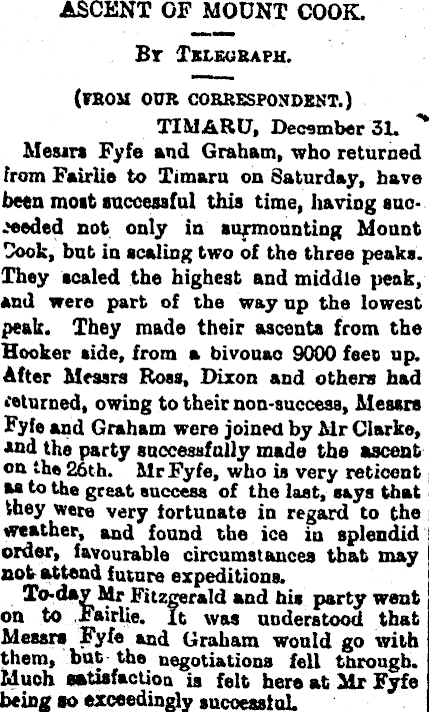
The first recorded ascent sparked widespread interest in the area. In the early 20th century, mountaineering expeditions and guided tours to Mount Cook became increasingly popular, attracting adventurous travellers from around the world.
The establishment of the Hermitage Hotel in 1884 further fuelled tourism growth in the region. The hotel served as a base for mountaineers and tourists, offering accommodation and stunning views of the surrounding mountains. As infrastructure and accessibility improved over the years, more visitors flocked to Mount Cook National Park, captivated by its breathtaking alpine scenery, glaciers, and pristine wilderness.
Today, Mount Cook continues to be a major attraction for nature lovers, hikers, climbers, and photographers. It offers a range of outdoor activities, including guided hikes, helicopter tours, and glacier exploration, providing visitors with an unforgettable experience amidst the rugged beauty of the Southern Alps.
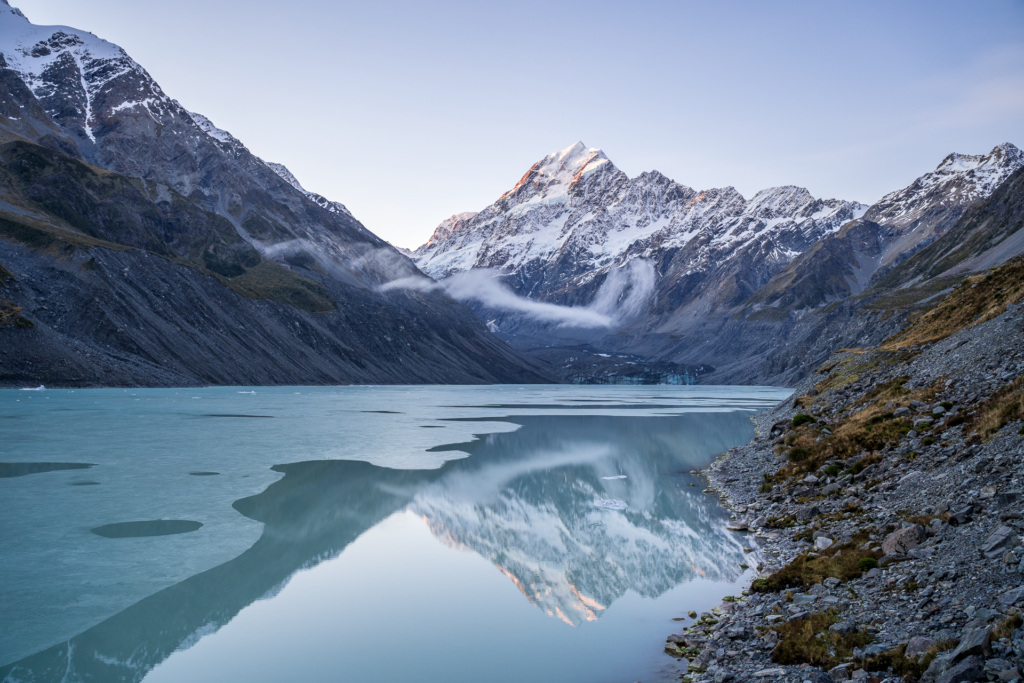
Explore Mt Cook and the Glaciers by Air
Exploring Mt Cook, the glaciers and the Southern Alps is best by flight, soaring above the rugged mountain tops and spectacular views of the glaciers. Here’s a few popular ways to see the sights from above:
Aoraki Panorama flight
This 30-minute experience takes in views of hanging glaciers, Mt Cook and icebergs on the Tasman Terminal Lake. The alpine landing location is the perfect way to feel the grandeur of the Southern Alps and for you to experience the fresh alpine air.
Haupapa/Tasman Glacier Explorer
Our 5-star rated highlights flight is 40-minutes long and travels the full length of Haupapa/Tasman Glacier. Enjoy incredible views of towering mountain peaks and glacial crevasses. The flight includes a snow landing on the magnificent glacier before returning to base over the stunning terminal lake and icebergs.
Aoraki/Mt Cook Ultimate
The Aoraki/Mt Cook Ultimate flight is 50-minutes long, taking in the best of the best. See icebergs, hanging glaciers and the world-famous Fox & Franz Josef glaciers whilst circling the summit of Aoraki/Mt Cook. Make life-long memories with a snow landing on the Haupapa/Tasman glacier before flying back and catch views of the West Coast and the Tasman Sea.
Aoraki/Mt Cook and the Southern Alps are a spectacular place to visit all year round. In summer, you can enjoy bright skies – with some peaks even having glistening snow. In winter, the mountains look dazzling in their winter coats – their peaks covered in snow and ice. So be sure to wrap up with layers as it can get very cold outside of the helicopter.
Experiencing the majesty of New Zealand’s highest peak, Aoraki/Mt Cook is a unforgettable moment and creates life long memories. Come and take in the breath-taking glaciers and turquoise lakes and immerse yourself in stunning scenery. Don’t forget to start planning your trip and book your flight early to avoid disappointment.
